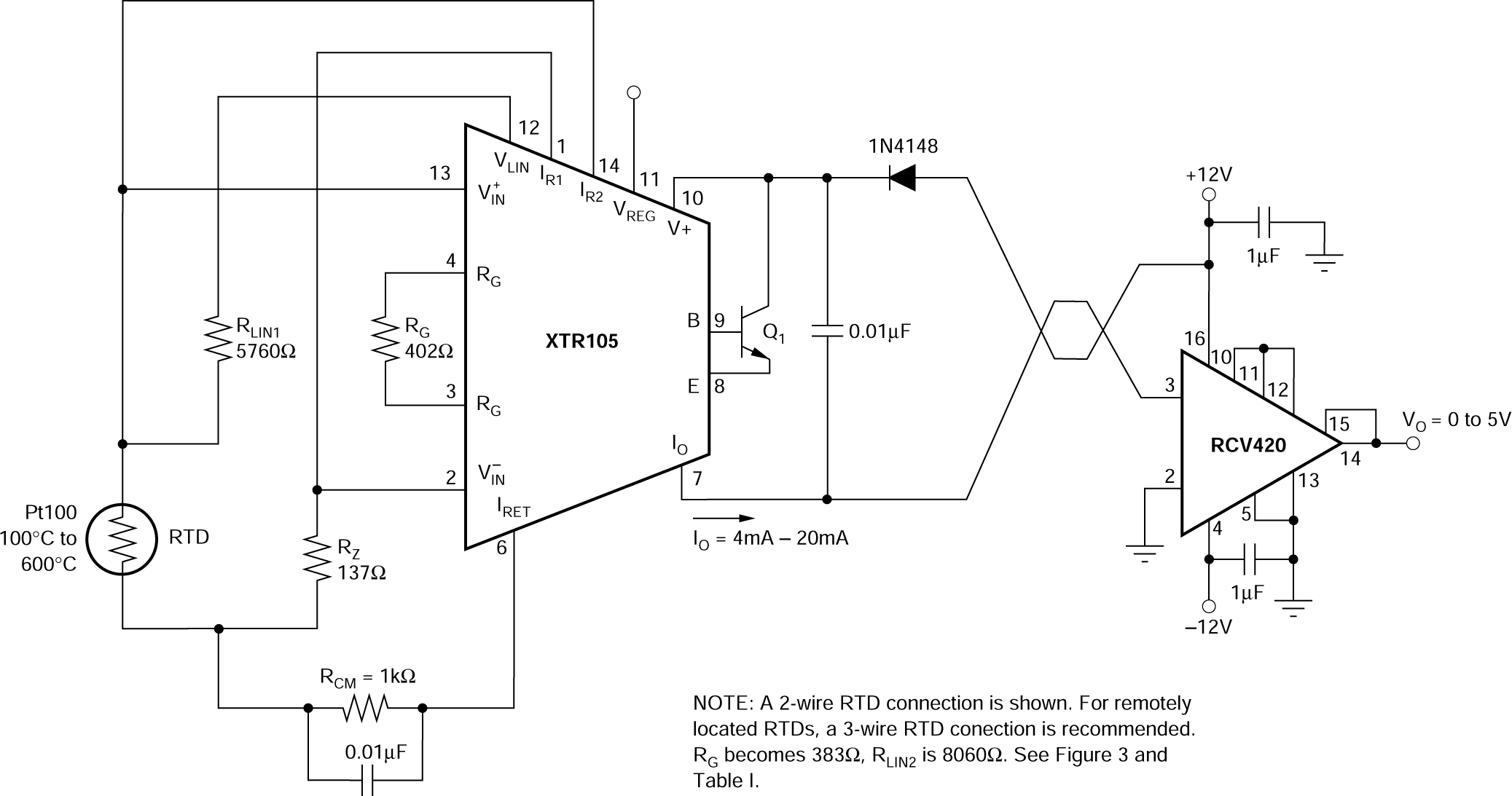SBOS061C February 1997 – October 2024 XTR105
PRODUCTION DATA
- 1
- 1 Features
- 2 Applications
- 3 Description
- 4 Pin Configuration and Functions
- 5 Specifications
- 6 Detailed Description
- 7 Application and Implementation
- 8 Device and Documentation Support
- 9 Revision History
- 10Mechanical, Packaging, and Orderable Information
Package Options
Refer to the PDF data sheet for device specific package drawings
Mechanical Data (Package|Pins)
- D|14
- N|14
Thermal pad, mechanical data (Package|Pins)
Orderable Information
7.1.2 Loop Power Supply
The voltage applied to the XTR105, V+, is measured with respect to the IO connection, pin 7. V+ can range from 7.5V to 36V. The loop-supply voltage, VPS, differs from the voltage applied to the XTR105 according to the voltage drop on the current sensing resistor, RL (plus any other voltage drop in the line).
If a low loop-supply voltage is used, RL (including the loop wiring resistance) must be made a relatively low value so that V+ remains 7.5V or greater for the maximum loop current of 20mA:

For loop currents up to 30mA, design for V+ equal or greater than 7.5V to allow for out-of-range input conditions.
The low operating voltage (7.5V) of the XTR105 allows operation directly from personal computer power supplies (12V ±5%). When used with the RCV420 current loop receiver (see Figure 7-3), the load resistor voltage drop is limited to 3V.
 Figure 7-3 ±12V Powered Transmitter-Receiver Loop
Figure 7-3 ±12V Powered Transmitter-Receiver Loop